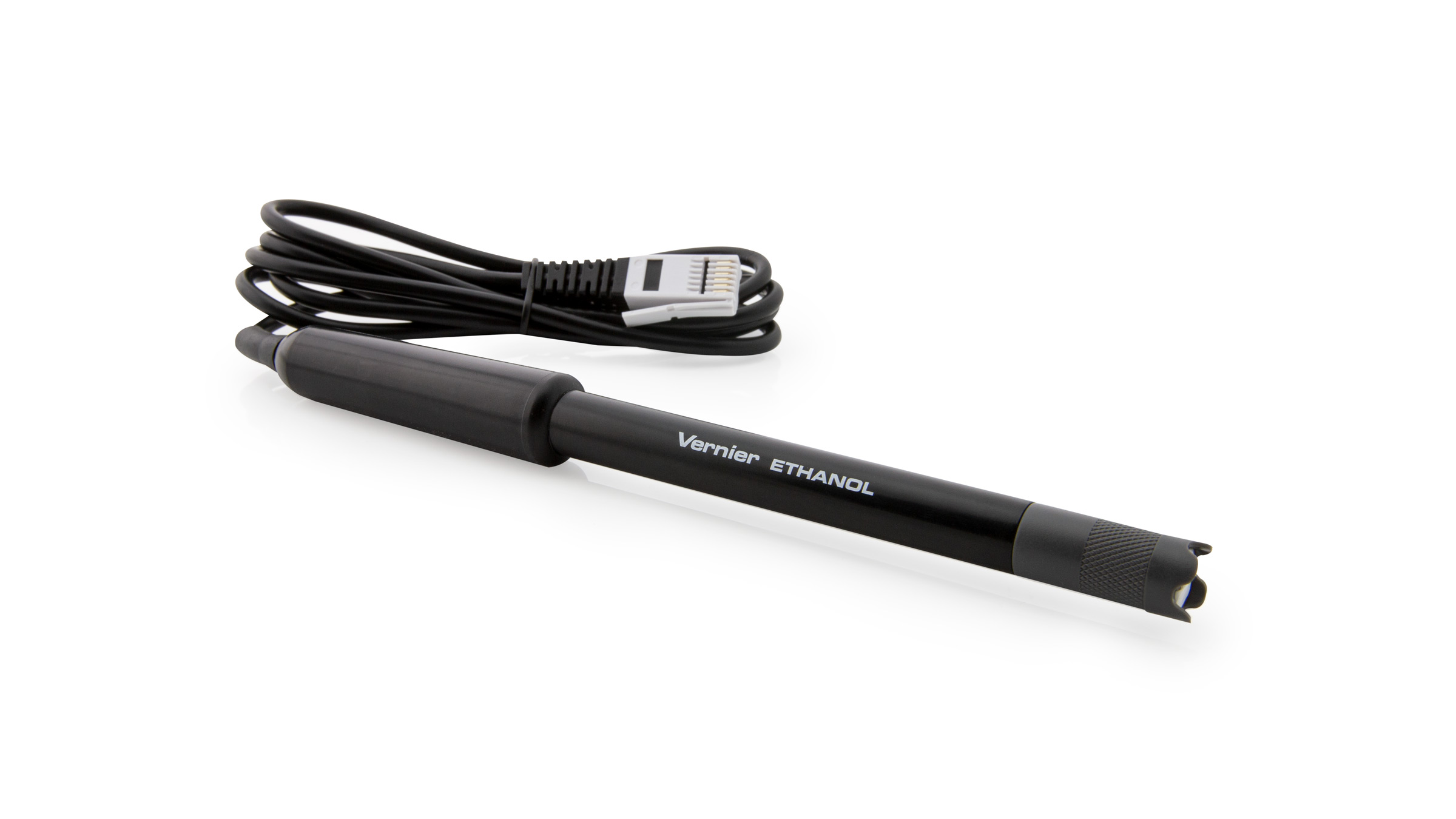Ethanol Sensor (ETH-BTA )

Troubleshooting
- Primary Test: Place the sensor over a sample containing 1% ethanol. The readings will rise within a minute to near 1%.
- Secondary Test: Verify that the sensor reads 0.01% or less in air after warming up for 5 minutes.
- Tertiary Test: Check the calibration screen to make sure the live voltage reading is stable and greater than 4.5V when not exposed to ethanol after warming up for 5 minutes.
Tips
- Did you allow the sensor to warm up? There is a 5 minute warm up period each time you plug the sensor in.
- Is your data collection time long enough? Diffusion of gases is a fairly slow process and there are delays in readings.
- Are you collecting in a controlled environment? Use the 250 mL Nalgene collection bottle and split stopper that is included with the sensor.
- Is your expected concentration of ethanol too high for the sensor? If you are testing something with an expected ethanol concentration above 3%, dilute the sample before collecting.
- The ethanol sensor cannot be used with Go!Link (
GO-LINK ) as the sensor draws too much current.
Additional Troubleshooting
- Do the ethanol sensors need to warm up?
- Can Vernier ethanol sensors be used in liquid?
- Ethanol Sensor never reads zero.
- Do you have written instructions for experiments that use the Vernier ethanol sensors?
- How do I use the Ethanol sensor with a CO₂ Gas sensor to measure fermentation?
- Do I need to calibrate Vernier ethanol sensors?
- What is the range of the Vernier ethanol sensors?
- Can I use Vernier ethanol sensors to measure the amount of ethanol produced from a fermentation?
- Why does my software identify the Ethanol Sensor as an Oxygen Gas Sensor?
Specifications
- Range: 0% to 3%
- Response time 95% of full scale in 60 seconds (after initial warm up)
- Accuracy (factory calibration): ±1.5% at 3%
- Accuracy (custom calibration):
⚬ 1-3%: ±0.5% at 3%
⚬ 0.1-1%: ±0.3% at 1% - Resolution (12-bit):
⚬ 0.02% from 2-3%
⚬ 0.01% from 1-2%
⚬ 0.001% from 0-1% - Default calibration: Y = C*X^p
⚬ C: -2.995
⚬ p: 0.9054
Calibration
For experiments looking at rate of change, calibration is not necessary. For quantitative analysis, a two point calibration is recommended. For details on calibrating a sensor, see How do I calibrate my sensor?
Related Products
- Ethanol Cap Assemblies (3) (
ETH-CAPS ) - #6 Stopper for Ethanol Sensor (
ETH-STOP ) - Tape for Ethanol Sensor (
ETH-TAPE ) - 250 mL Nalgene Bottle w/Lid (
CO2-BTL ) - BioChamber 2000 (
BC-2000 ) - Go Direct® Ethanol Vapor (
GDX-ETOH )
